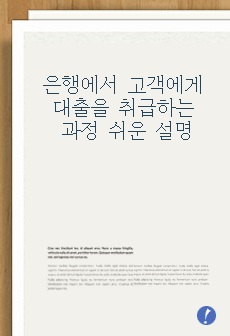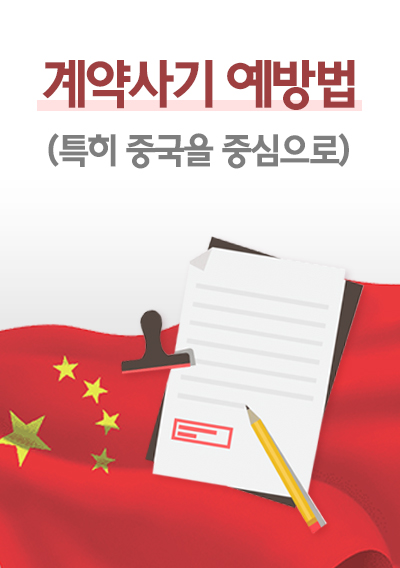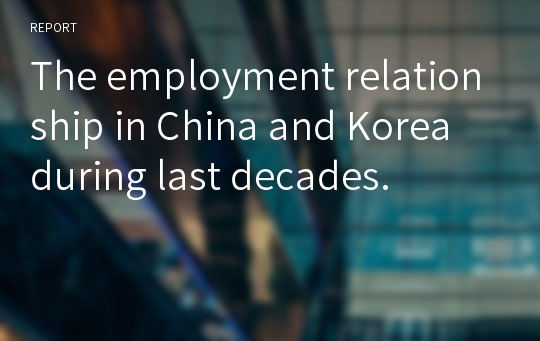The employment relationship in China and Korea during last decades.
*성*
다운로드
장바구니
소개글
최근 중국에 많은 관심을 갖고 있는 사람들이 많습니다. 그리고 중국은급격한 성장을 하고 있고 앞으로도 많은 성장이 기대되는 국가입니다.
하지만 이 국가에 대한 전반적인 지식을 갖고 투자를 해야하고
취업이나 기타 목적을 위해서도 중국정부에 대한 기업 정책 그리고
노사 문제에 대해서도 알아야 합니다.
이 리포트는 중국과 한국의 노사문제에 관해서 고찰한 내용입니다.
목차
1. Introduction2. 1 Employment environment in Korea
2. 2 Employment environment in China
2. 3 Korean job security
2. 4 Different job security in China
2. 5 Wage systems change in Korea
2. 6 Chinese wage system under its economic system
3. Conclusion
본문내용
1. IntroductionNowadays, most countries have many companies of different sizes and each has different employment relationships depending on the country’s policies and employment environment. In some countries, employees have considerable power, whereas in other countries, employers have most power. Therefore, this essay will focus on the employment relation of Korea and that of China over the past decade. How much power do employees or employers have in these two countries? In Korea, the power of employees is quite similar to that of employers. On the other hand, in China, employers have much more power than employees, and the Chinese government has the most power. Therefore, the balance of power between employers and employees in Korea and China is different. Both of these countries have totally different employment relations, e.g. wages, union membership and activity, the type of employment and so on. Because both of these countries have different aspects of employment relation, this essay will discuss the similarities and differences in Korea and China regarding employment relations.
참고 자료
Bamber, J. & Leggett, J. (2001). Changing employment relations in the Asia-Pacific region. International journal of manpower, 22 (4),300-317.Chang, D.O. & Chae, J.H. (2004). The Transformation of Korean Labour
Relations since 1997. JournalofContemporaryAsia,34(4),427-448.
Deyo, F. C. & Agartan, K. (2003). Markets, Workers and economic reforms:Reconstructing East Asian labor systems. Journal of International Affairs,57 (1),55-85.
Ding, D. Z. & Warner, M. (2001). Chinas labour-management system reforms: Breaking the Three old irons(1978-1999). Asia Pacific Journal of Management, 18 (3),315-336.
Jung, E.H. & Cheon, B.Y. (2006). Economic crisis and changes in employmentrelations in Japan and Korea.Asiansurvey,XLVI(3),457-476.
Lansbury, R.D,Lee,B.H & Woo,S.H (2002). The reform of production systems and employment relations in the Korean auto industry: The experience of Kia Motors in the 1990s.
NewZealandJournalofIndustrialRelations,27(1),79-92.
Levine,M.J (1997). Worker rights andl abor standards in Asia’s Four New Tighers. NewYork:Plenum.
Zhu, Y. & Warner, M. (2005). Changing Chinese employment relations since WTO accession. Personnel Review, 34 (3),354-371.



























